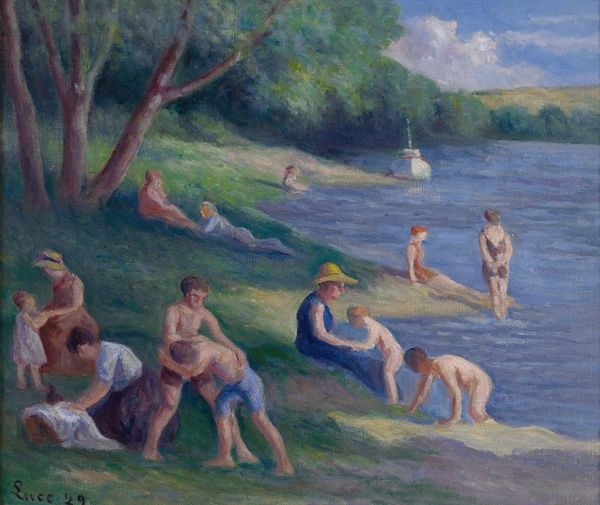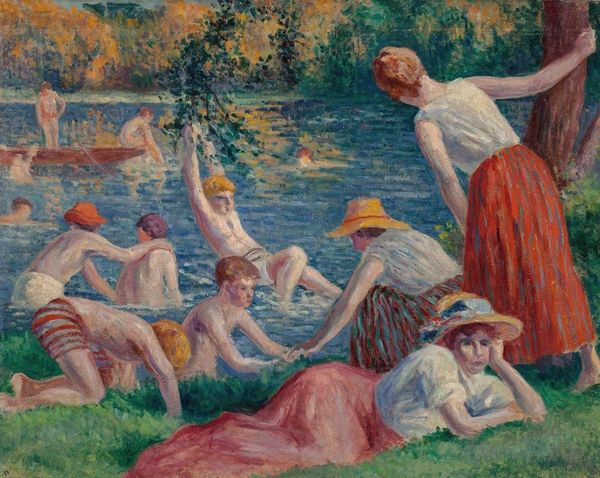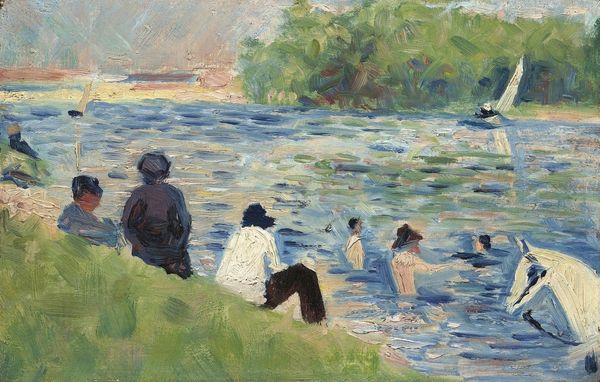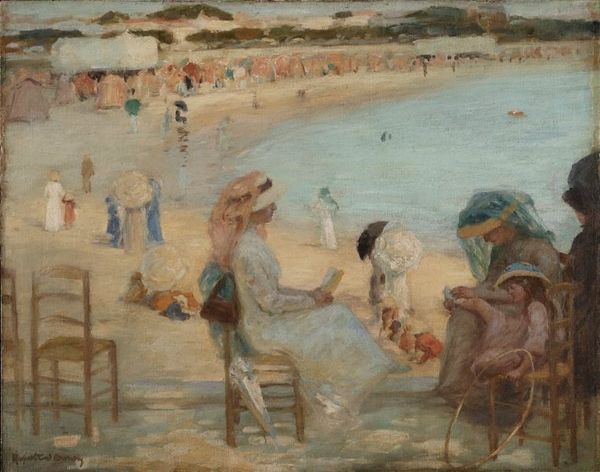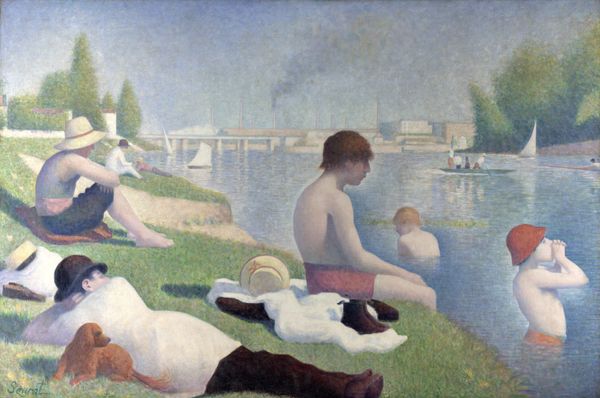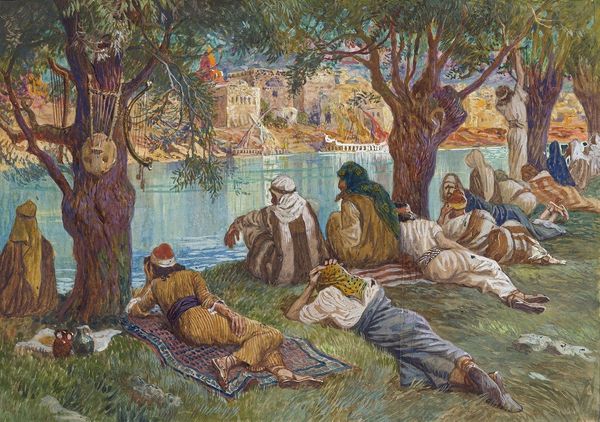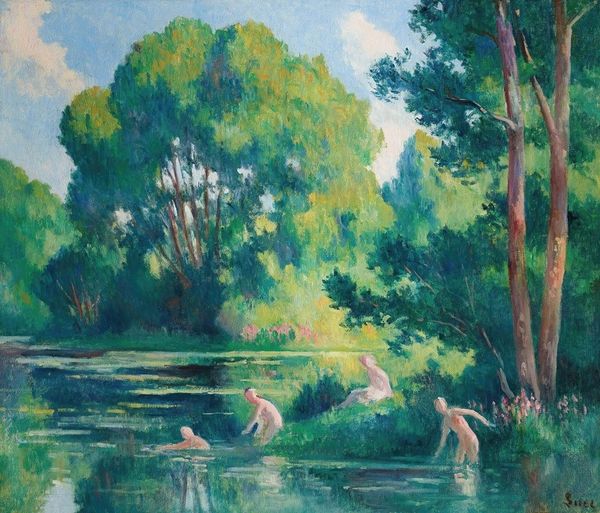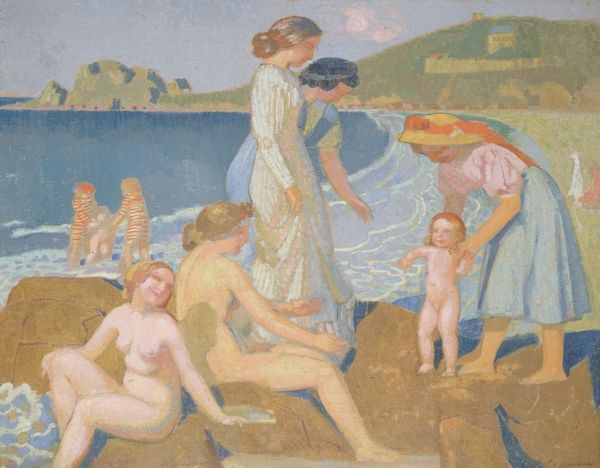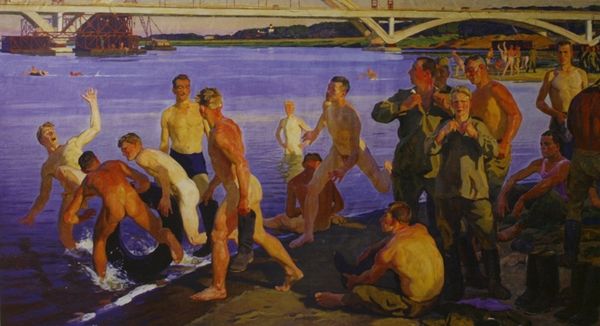
Copyright: Public Domain: Artvee
Curator: What strikes me immediately about this painting is the feeling of carefree leisure—the shimmering water, the bodies lounging in the sun. Editor: And, it's a great entry point for discussing Maximilien Luce’s "Méricourt, un dimanche au bord de la Seine", created in 1929. It depicts a Sunday afternoon scene on the banks of the Seine. Knowing Luce's socialist leanings, this seemingly idyllic image might hold deeper significance, speaking to working-class leisure during a period of societal change. Curator: You pick up on the social element—that makes sense given your perspective. What about the iconography of the setting itself? The Seine has always been so crucial in French art and cultural memory. In art, we see it emerge again and again as a site of meeting, industry, and recreation. Editor: Exactly. The river acts as a life-source, not just for industry and commerce—I am thinking here about Impressionism in the context of Haussmanization and later its post-impressionist echoes with Luce and others—but also as an egalitarian space of leisure, hinting at the complex relationship between class, work, and leisure during the interwar period. Do you notice how many generations of family members seem to populate the landscape? The female figures particularly! Curator: I do see that generational play, but also something really dynamic regarding gender. Many of the women are clustered on the left performing various domestic activities, yet many other men and boys are on the right completely free of chores. It reflects, perhaps unconsciously, the existing gendered division of labor even within leisure. Editor: It does indeed feel like the painting becomes a visual representation of sociological divides at that time. And it echoes feminist theory exploring themes of domestic labor and the gendered division of leisure. Even on holiday, the social structures persist. Curator: What’s powerful here, for me, is how the apparent “lightness” of Impressionistic painting can mask this complexity. What might first seem to be simply a carefree day at the river unveils intricate, lingering issues around identity and equality when closely analyzed. Editor: It seems fair to say, then, that Luce's seemingly simple riverside scene holds many historical and ongoing social narratives—inviting us to reflect critically on gender, labor, and class disparities as we continue working toward a more just future.
Comments
No comments
Be the first to comment and join the conversation on the ultimate creative platform.
